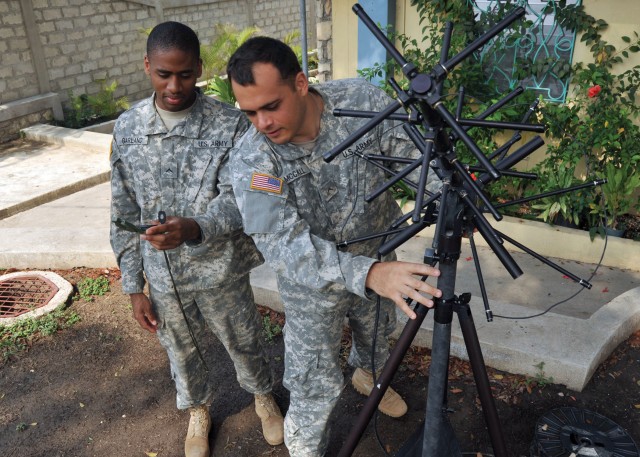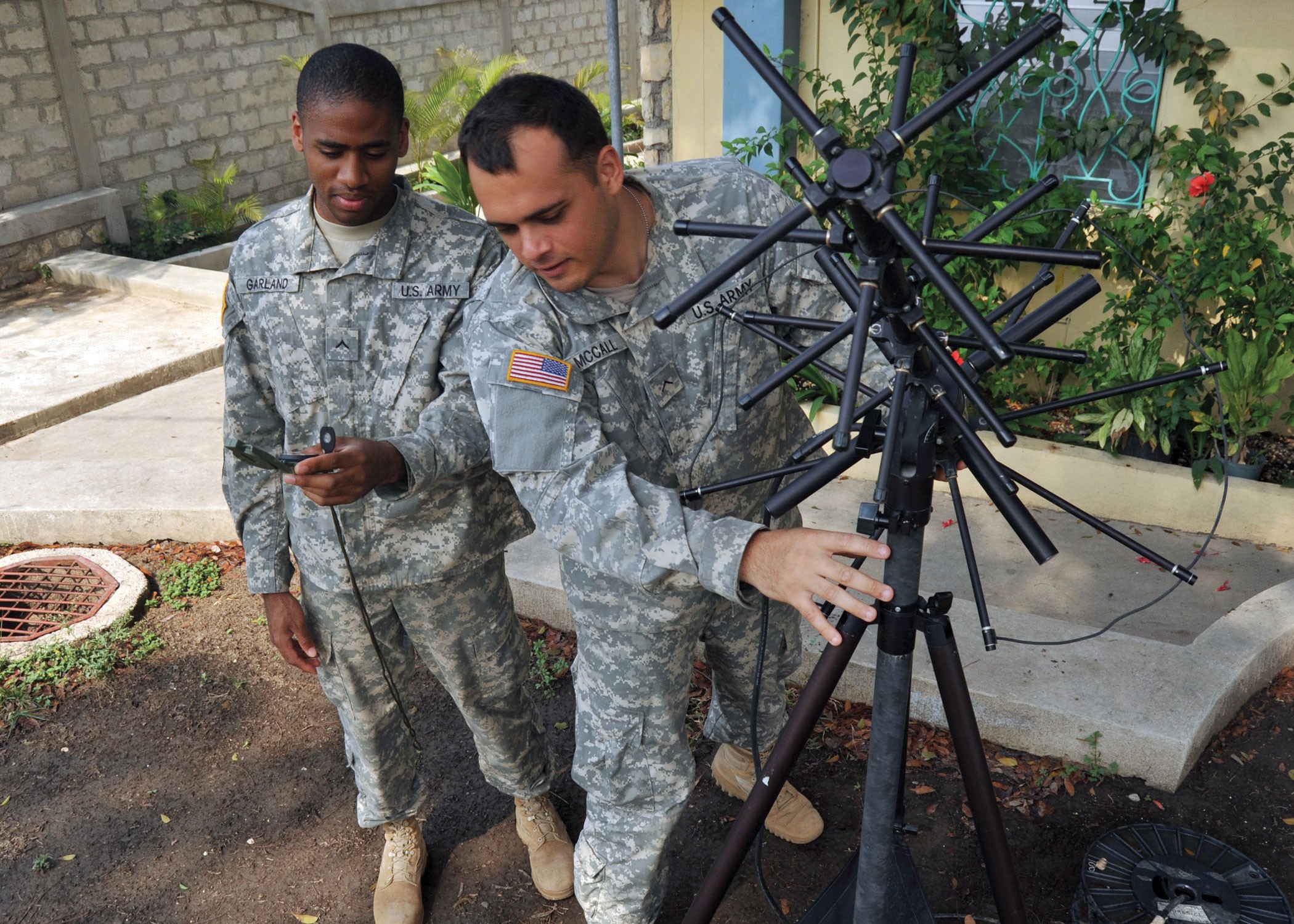
Sometimes the enemy isn't an insurgency - it's a storm surge.
Just ask Col. Quill Ferguson.
"When you enter into a crisis situation, normally one of the first things to go is your communications," said Col. Ferguson, G6 for U.S. Army North, which frequently responds to natural disasters. "Having a satellite-based network allows you to bridge some of that infrastructure damage that you normally get, whether it's an earthquake, a hurricane or another man-made or natural event."
In the years since Hurricane Katrina exposed dangerous information gaps between various government responders, the Army has developed high-tech capabilities that enable rapid, inter-agency communications during an emergency. One of those systems, the Joint Incident Site Communications Capability, or JISCC, has been deployed in response to wildfires in California, the earthquake in Haiti and other disaster areas, said Joseph Cellini, JISCC project lead for the Army's Program Executive Office Command, Control and Communications - Tactical (PEO C3T).
In austere battlefield environments, network infrastructure can be nonexistent - leaving Soldiers to rely on imported satellite communications to transmit information by voice, data and video. Back in the U.S., a disaster that wipes out the communications infrastructure can have the same chilling effect.
"The advanced, futuristic technologies that we live with go away, and you become very austere," Cellini said. "You have no electricity, satellite, bandwidth and communications. Think of all the things we do on a daily basis. Now take it all away. That's really what happens at an incident site such as 9/11 and such as Katrina."
Now, the Army is able to fill that void by bringing in its own communications pipelines. Army North relies on vehicles powered by a generator and equipped with a satellite connection, allowing Soldiers to connect with their higher headquarters on both classified and unclassified networks, said Sgt. 1st Class Alberto Hernandez, who is assigned to Army North.
"Once we have established communications through the satellite link, it's just like being back at the office. You have the same capabilities," Hernandez said. "It helps immensely."
The familiar, user-friendly equipment for transmitting voice, video and data means personnel don't confront a "learning gap" in the critical moments, Ferguson said.
"We can be on the air in 10 minutes or better, and that means the difference in saving lives and coordinating with the first responders at every level - whether it's the local, state or federal level," he said. "The most crucial element of any crisis is information, and being able to disseminate that information, to share it with the right people, at the right time."
To track the movement of personnel, equipment and supplies to the area of distress, Army North responders also have access to the Command Post of the Future (CPOF), said Matt Hopper, a telecommunications specialist for Army North G6. The CPOF, a key command and control (C2) software system on the battlefield, can be used for domestic disaster response when it is fed with historical data and mapping software of the affected region, he said.
"It gives us a snap picture of what's going on during an event," Hopper said. "In theater, the Commander can see where his forces are, where they're moving. If we were moving logistics to provide food, water and shelter to citizens of the United States, we use it to track units that are going in to do search and rescue."
In addition to satellite feeds, both the Army North vehicles and the JISCC come equipped with handheld portable radios that can run on various bands and frequencies, permitting different agencies to talk to one another. That provides simultaneous situational awareness for first responders including police and fire departments, Emergency Medical Technicians, state and local governments, and relief organizations such as the Red Cross, Cellini said.
"There are no longer these disparate communication nodes he said. "Everyone can talk by doing talk groups. It brings everyone on the same common page."
The JISCC is 11,000 pounds of communications and support equipment, all transported in an 18-foot trailer and can be set up and operational in less than an hour at an incident site, Cellini said. The PEO C3T Special Projects Office (SPO) supported the delivery of JISCC systems to all 54 U.S. states and territories supported by the National Guard Bureau.
In each state, the system is overseen by the adjutant general, the governor's military adviser, and the state is then responsible for training the local first responders. Because the JISCCs are identical and interoperable, states can rush to one another's aid, and have contractual agreements to do so, Cellini said.
"If a hurricane hits the entire Southeastern coastline, having an agreement between North Carolina and South Carolina does no service if they're both underwater," he said. "So South Carolina has (agreements) with its brothers on its borders, but also has an agreement with maybe Illinois or Wisconsin."
Mobile satellite communications also allow military responders to be prepared for the worst during big events like the presidential inauguration, the Super Bowl and the Indianapolis 500, if the military is required.
For Hopper, the capabilities proved their worth during a series of wildfires that raged across southern California in 2007. The wildfires destroyed more than 2,700 buildings, and more than 500,000 people were evacuated from their homes from an area north of Los Angeles to the Mexican border.
Hopper said responders were able to display a video feed from a search helicopter showing a "wall of fire" raging closer to people's homes.
"We were able to direct local responders to the area to save those folks and get them out of their homes, get them out of harm's way," he said. "Time is the ultimate enemy when it comes to one of these events. Because we were able to do it so rapidly with the equipment that we carry, we were able to get those people saved in a short amount of time."
Related Links:
Command Post of the Future program nears fielding of 6,000th unit

Social Sharing